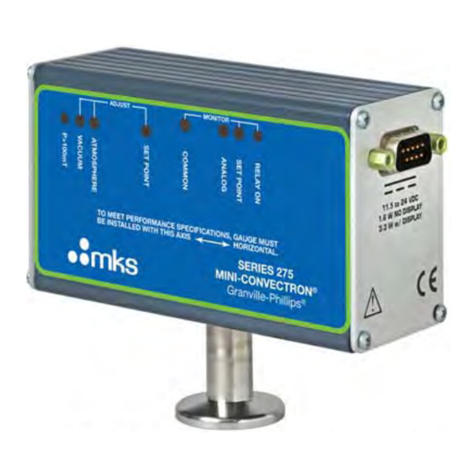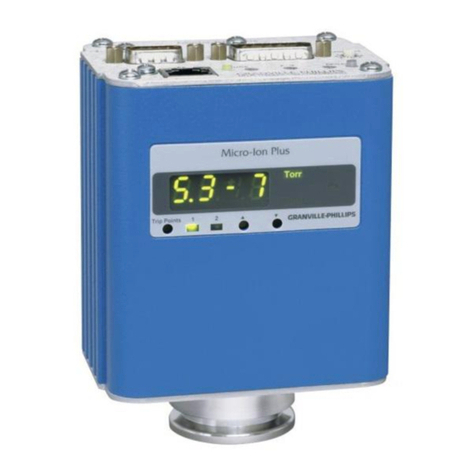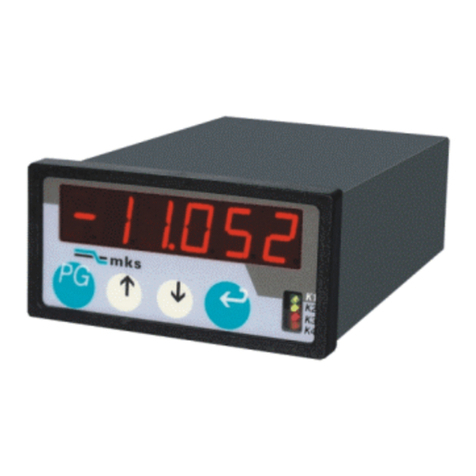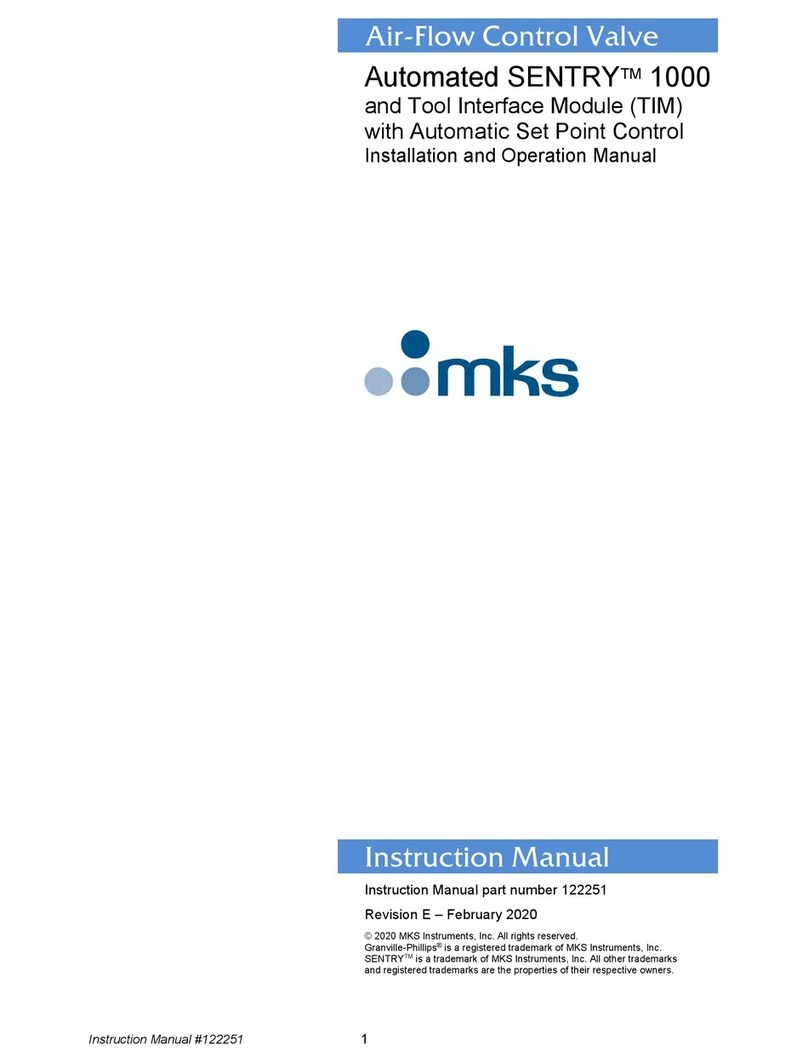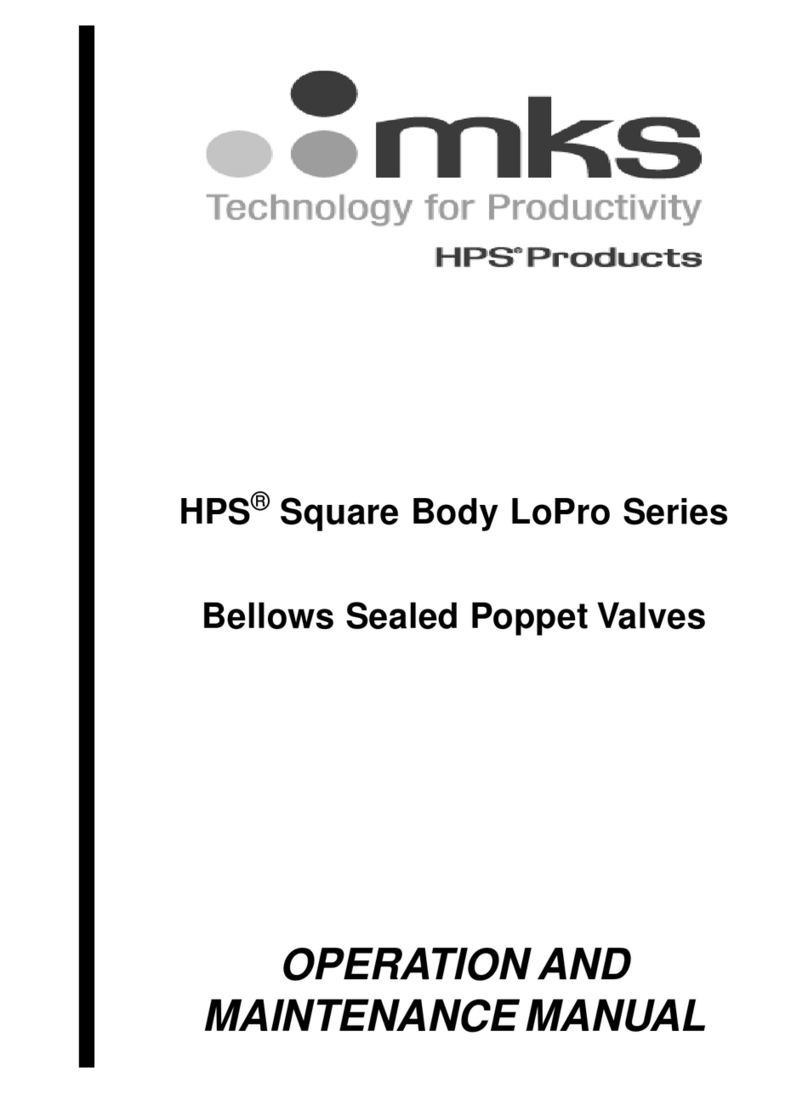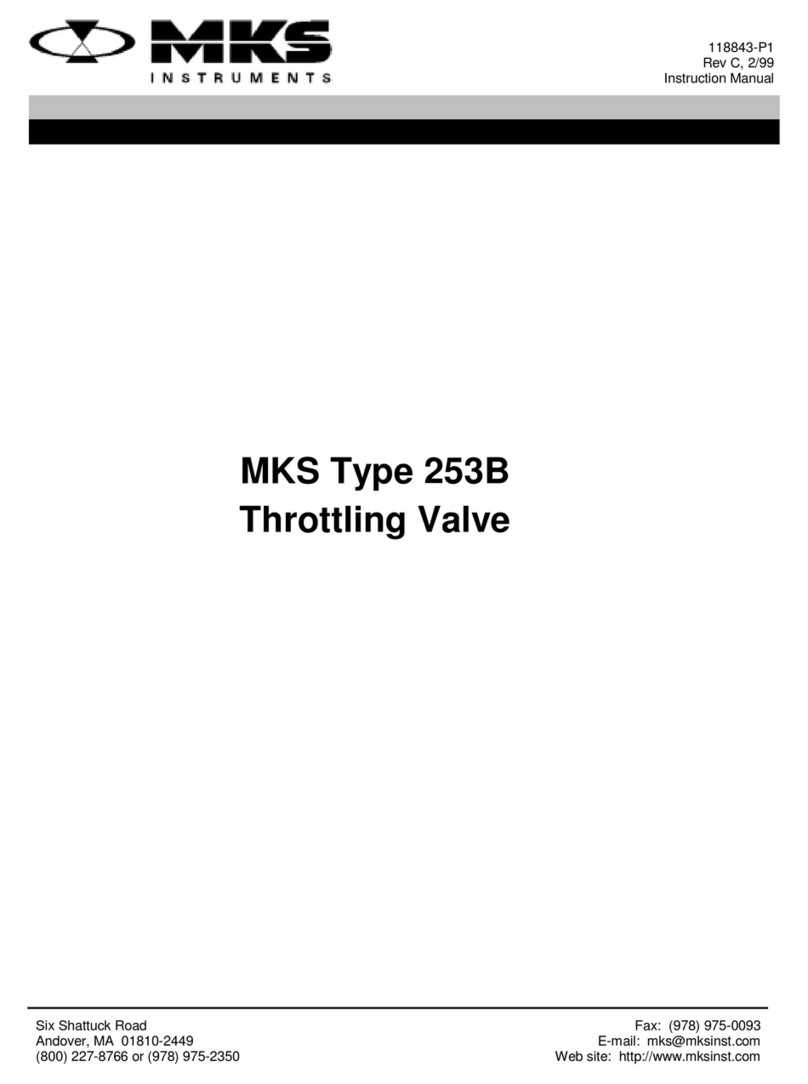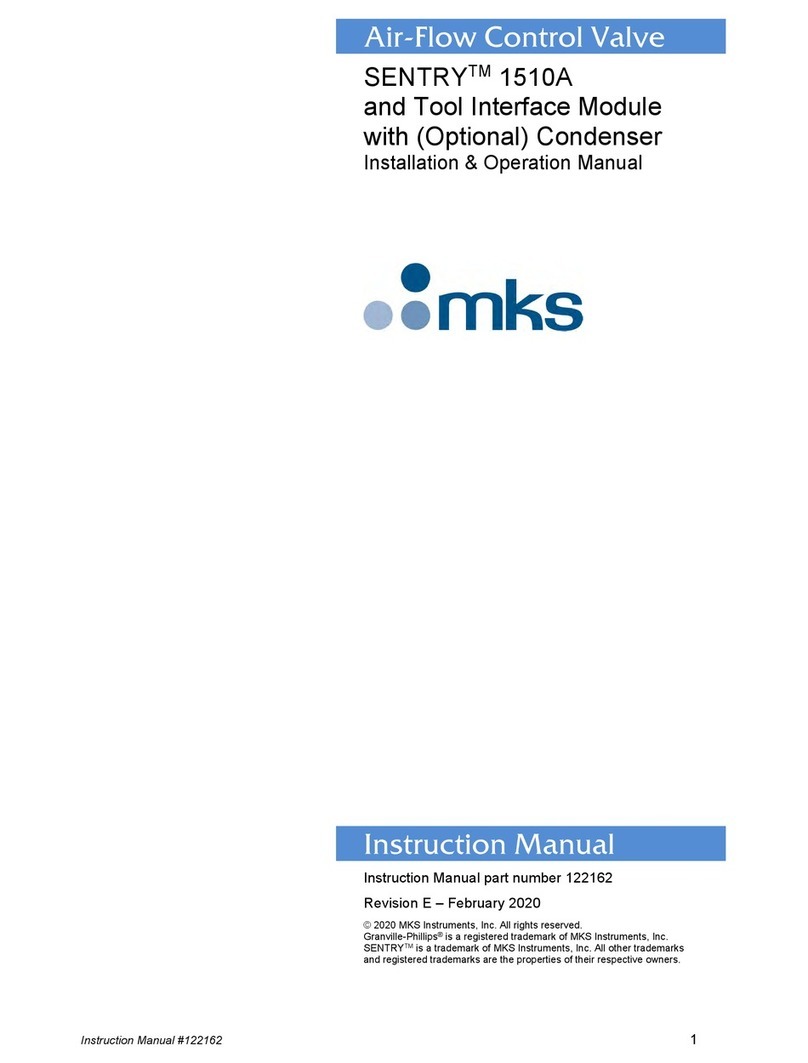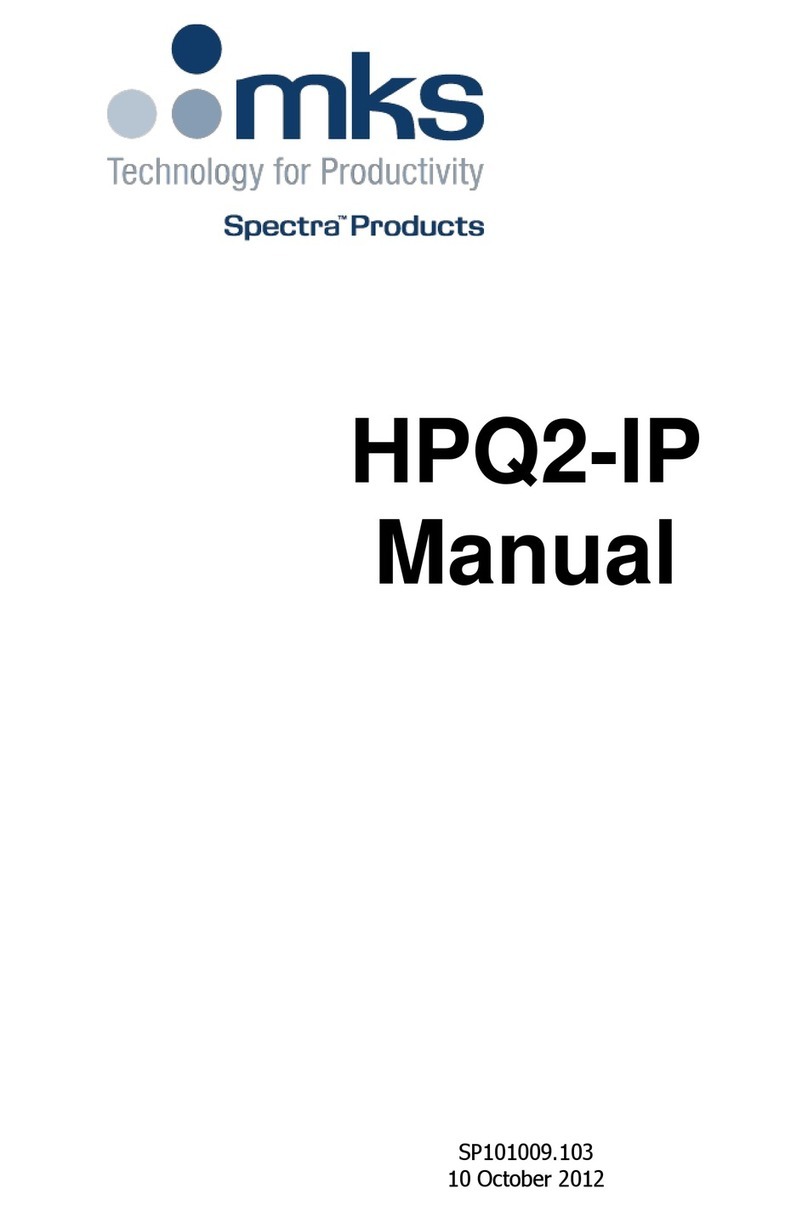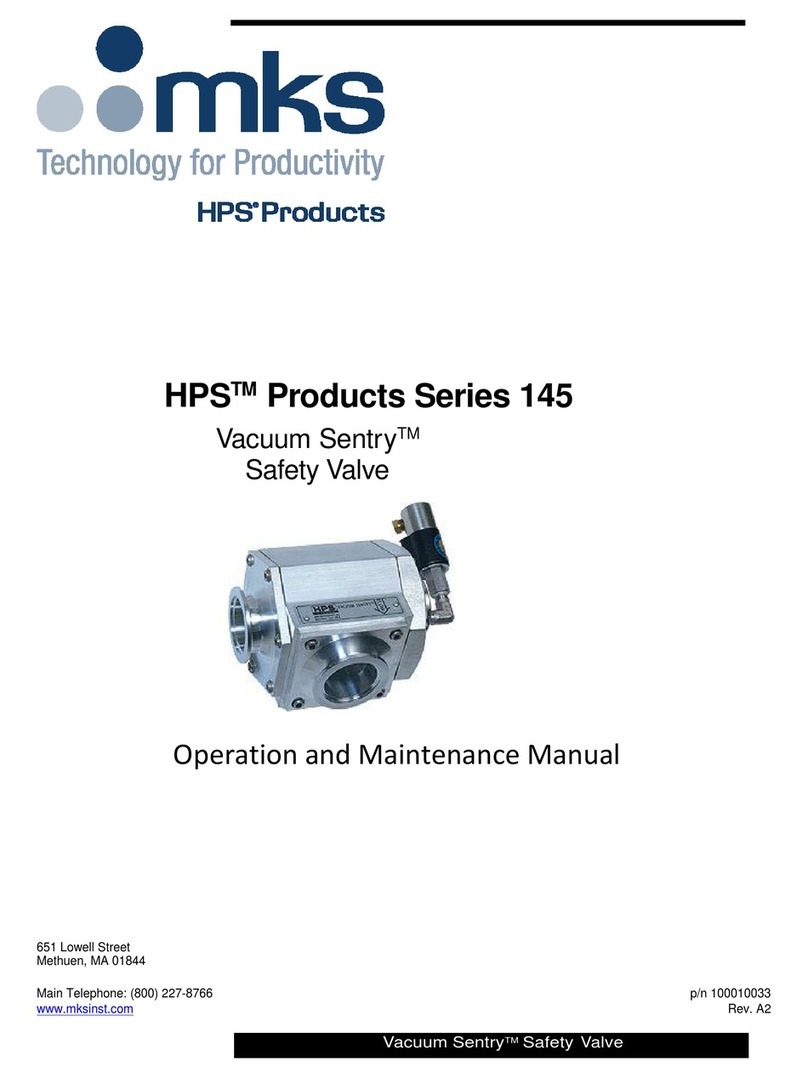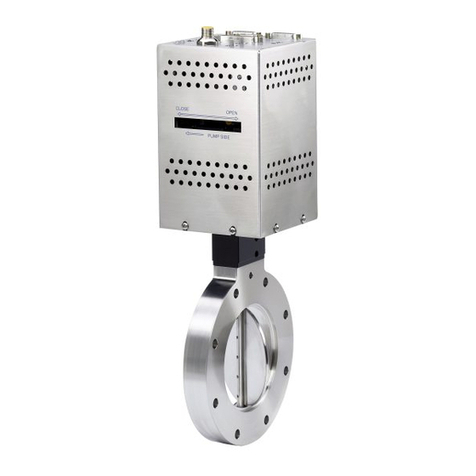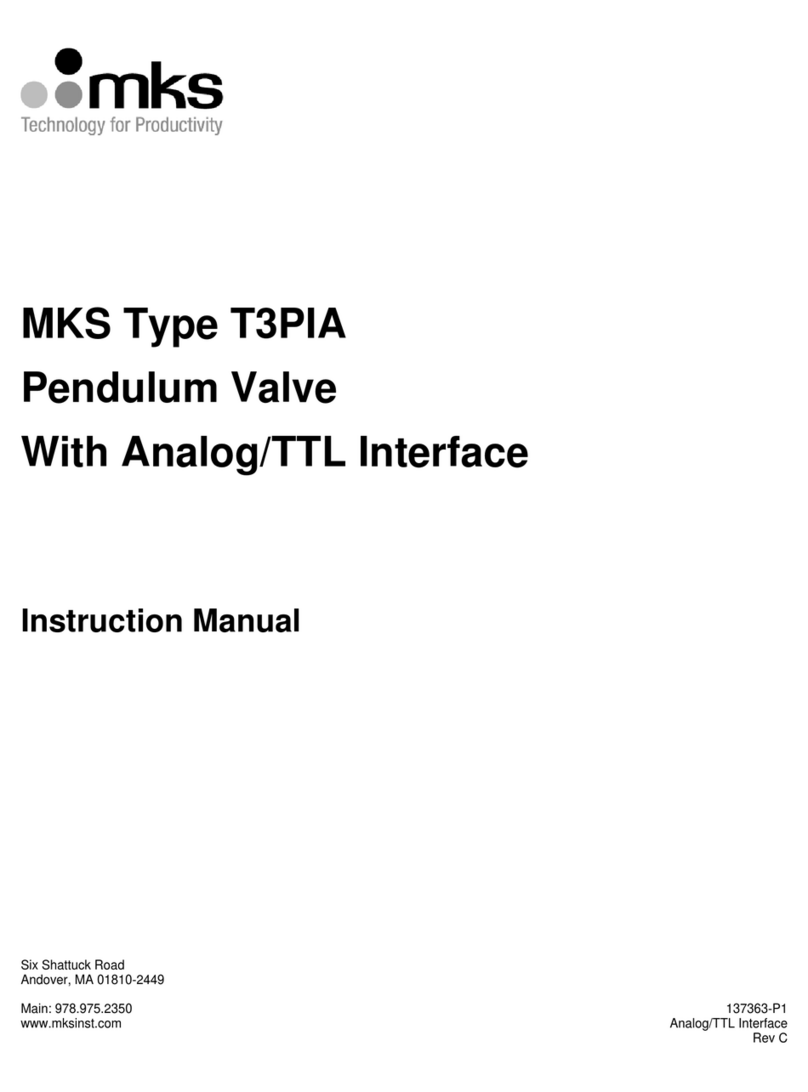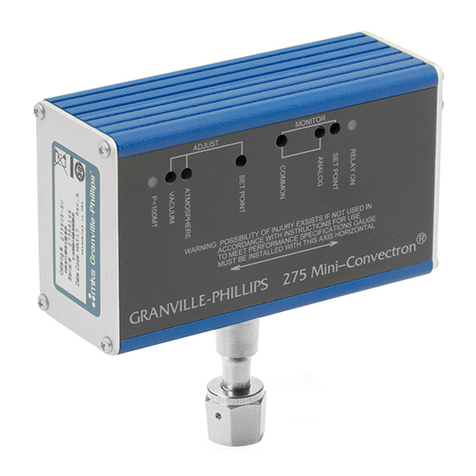
Sicherheitshinweise für das Ventil
4
Betriebsanleitung verletzt die für dieses Gerät und seine Bedienung geltenden Sicherheitsstandards,
und kann die Schutzvorrichtungen an diesem Gerät wirkungslos machen. MKS Instruments, Inc.
haftet nicht für Missachtung dieser Sicherheitsvorschriften seitens des Kunden.
Warnung
Solange das Ventil nicht fest in ein System eingebaut ist, besteht
Verletzungsgefahr aufgrund von beweglichen Teilen. Daher Finger und andere
Körperteile unbedingt von allen Ventilöffnungen fernhalten
.
Niemals Fremdkörper in Öffnungen einführen, in denen ein Kontakt mit
beweglichen Teilen möglich ist.
Das Ventil vor dem Hantieren stets von allen elektrischen und pneumatischen
Kraftquellen trennen.
Niemals Teile austauschen oder Änderungen am Ventil vornehmen!
Ersetzen Sie keine Teile mit baugleichen oder ähnlichen Teilen, und nehmen Sie keine eigenmächtigen Änderungen am
Ventil vor. Schicken Sie das Ventil zwecks Wartung und Reparatur an den MKS-Kalibrierungs- und -Kundendienst ein.
Nur so wird sichergestellt, daß alle Schutzvorrichtungen voll funktionsfähig bleiben.
Wartung nur durch qualifizierte Fachleute!
Das Auswechseln von Komponenten und das Vornehmen von internen Einstellungen darf nur von qualifizierten
Fachleuten durchgeführt werden, niemals vom Bedienpersonal.
Vorsicht beim Arbeiten mit gefährlichen Stoffen!
Wenn gefährliche Stoffe verwendet werden, muß der Bediener die entsprechenden Sicherheitsvorschriften genauestens
einhalten, das Ventil, falls erforderlich, vollständig spülen, sowie sicherstellen, daß der Gefahrstoff die von ihm
benetzten, im Ventil verwendeten Materialien, insbesondere Dichtungen, nicht angreift.
Spülen des Ventils mit Gas!
Nach dem Installieren oder vor dem Ausbau aus einem System muß das Ventil unter Einsatz eines reinen Trockengases
vollständig gespült werden, um alle Rückstände des Vorgängermediums zu entfernen.
Anweisungen zum Spülen des Ventils!
Das Ventil darf nur unter einer Ablufthaube gespült werden. Schutzhandschuhe sind zu tragen.
Nicht zusammmen mit explosiven Stoffen, Gasen oder Dämpfen benutzen!
Um der Gefahr einer Explosion vorzubeugen, darf dieses Produkt niemals zusammen mit explosiven Stoffe aller Art
eingesetzt werden, sofern es nicht ausdrücklich für diesen Zweck zugelassen ist.
Anweisungen zum Installieren der Armaturen!
Alle Ventilanschlußstücke und Armaturenteile müssen mit den Ventilspezifikationen übereinstimmen, und mit dem
geplanten Einsatz des Ventils kompatibel sein. Der Einbau, insbesondere das Anziehen und Abdichten, muß gemäß den
Anweisungen des Herstellers vorgenommen werden.
Ventil auf Undichtigkeiten prüfen!
Überprüfen Sie sorgfältig alle Verbindungen auf undichte Stellen.
Nur unter zulässigen Anschlußdrücken betreiben!
Betreiben Sie das Ventil niemals unter Drücken, die den maximal zulässigen Druck (siehe Produktspezifikationen)
übersteigen.
Geeignete Berstscheibe installieren!
Wenn mit einer unter Druck stehenden Gasquelle gearbeitet wird, sollte eine geeignete Berstscheibe in das
Vakuumsystem installiert werden, um eine Explosionsgefahr aufgrund von steigendem Systemdruck zu vermeiden.
Verunreinigungen vermeiden!
Stellen Sie sicher, daß Verunreinigungen jeglicher Art weder vor dem Einsatz noch während des Betriebs in das Innere
gelangen können. Staub- und Schmutzpartikel, Glassplitter oder Metallspäne können das Produkt dauerhaft beschädigen
oder Prozeß und Meßwerte verfälschen.
Hände weg von der Ventilöffnung!
Körperteile, insbesondere Finger, sowie Fremdobjekte während des Betriebes von der Ventilöffnung fernhalten.

